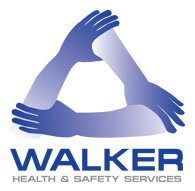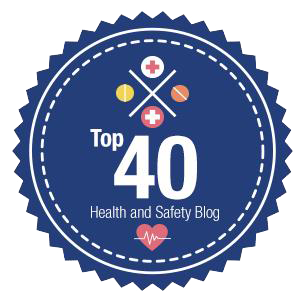
Epilepsy is a neurological condition affecting around 600,000 people in the UK — so it’s essential that every employer knows how to help those with the condition. Health, safety and ergonomics consultants System Concepts lay out the 10 key actions to take.
What every employer needs to know
The majority of people diagnosed with epilepsy are likely to be classified as disabled by the Equality Act 2010. This means that employers must make reasonable adjustments for people with epilepsy, and complete appropriate risk assessments.
There are many different types of epilepsy, but people who have it have a tendency to have epileptic seizures. A seizure is a sudden burst of electrical activity in the brain, which causes a temporary disruption to the way the brain normally works. Seizures can range from the person remaining alert and aware of their surroundings, through to the person losing awareness and becoming stiff, falling to the floor and/or experiencing uncontrollable, jerky bodily movements.
If your organisation has an employee with epilepsy, these are the 10 key actions you should take.
- Understand the nature of the condition. Have a private talk with the affected employee to discuss how the condition affects them. Ask about:
- medication requirements (particularly at work)
- how well their epilepsy is managed
- type, duration and frequency of seizures
- any associated musculoskeletal issues
- any medication side effects
- any warning signs that they are about to have a seizure.
- Identify any triggers for seizures. This will help you work out how these can be eliminated or reduced to minimise the risk as much as possible. Consider:
- temperature
- light
- stress
- tiredness
- flicker
- season
- whether the work is indoors/outdoors
- computer screens, etc.
- Understand the individual’s requirements during and after a seizure. Once you know these, you can ensure that appropriate provision is made, eg a suitable place for rest/recovery, such as a first-aid room with appropriate facilities. Questions to ask would include:
- the likely recovery time
- the individual’s preferences for recovery (location, need for sleep or rest, desire to be accompanied, ability to continue working, practicalities of recovering at work or home)
- when paramedics are required or when first aiders should be able to manage the situation.
- Develop a care plan. This should be an individual care plan that sets out the details of the above three points.
- Consider allocating the person a dedicated locker. This would allow them to store items needed during/after they have a seizure (if not fully controlled by the medication). This could be used for:
- their care plan
- a breathable pillow
- a blanket
- any required medications
- a spare change of clothes.
Ideally, their line manager and first aiders would have a key to the locker for use when the individual is unable to access the contents themselves.
- Organise the individual’s work. Working hours, tasks and the pace of work should all be evaluated to ensure:
- targets and workload are manageable
- lone working is avoided
- driving is not required
- shifts that might influence seizures or medication times are avoided
- adequate breaks are given
- there will be at least one first aider on site with the individual at all times.
- Complete a DSE workstation assessment. This may indicate that certain equipment may be useful. Someone who has epileptic seizures is likely to require a:
- LCD screen
- fully padded chair with armrests, high backrest, headrest and braking system
- padding around any hard surfaces or sharp corners (such as the desk)
- wireless headset
- large space around the workstation, free of any hazards (such as loose cables).
- Ensure their safety in the workplace. Things to consider would include:
- implementing a buddy system or asking the individual to wear a fall-activated or pendant alarm
- reducing the need for them to use stairs, wherever possible (the importance of enforcing this is dependent on the nature and frequency of their seizures)
- (with the individual’s permission) inform everyone who regularly comes into close contact with them about the nature of their condition and how to react in an emergency situation — this includes site first aiders, close colleagues, reception staff, canteen staff and security staff.
- Provide easy access to an accessible toilet. If they are at risk of seizures, an accessible toilet offers more space and:
- the risk of injury is reduced
- they can use the alarm pull cord to request assistance, if needed
- the door can be opened from the outside in the event of an emergency
- how they will make their way to their nearest fire escape route
- what assistance they will need to get to the nearest fire escape route
- how they will travel down stairs to the final fire exit, including use of an evacuation chair and who is trained to use it
- what assistance they will need outside of the office at the assembly point. Complete a Personal Emergency Evacuation Plan (PEEP) for the individual.Epilepsy at work is a more common issue than you may have realised, and employers need to be aware of their responsibilities to help employees with this neurological condition.
Contact us should you require advice.
Suitable and Sufficient Risk Assessments: 5 Top Tips
- Start by identifying the hazards – the things that could go wrong – and work out how they could go wrong. Think about how someone could be injured, for example if their hand could be crushed by a moving machine part. Record your findings.
- Establish the likelihood and potential severity of an identified hazard occurring. The more likely an injury could occur, and the more serious it could be, the more measures you will need to put in place to mitigate the risk.
- Identify and implement suitable control measures, aiming to remove the risk or at least reduce it. For dangerous machinery parts, for example, you would normally need to provide fixed guarding to prevent access, as well as training for staff on how to use the guarding correctly.
- Regularly review your risk assessments to verify they are still current, and also in the event of any workplace changes. Only develop method statements and safe systems of work once your risk assessment procedure is complete, and that you are sure you have identified all of the applicable hazards and know how you will control them.
- Make sure staff undertaking the risk assessments are knowledgeable about the work process involved, and that employees are consulted on their views. They may be able to tell you of any shortcuts that can be achieved that could ultimately be dangerous, for example the potential for staff to defeat interlocked guards on a machine.
Getting the risk assessment process right is not difficult, and it can make all the difference in preventing an accident from occurring. Check today that each of your assessments meet the grade.
Contact us should you require assistance.





 Networked mobile devices, cloud-based data management and 4G networks mean we can now work almost anywhere. Flexible working can save costs and improve the work-life balance of employees, resulting in more staff working while travelling and away from the office. This means an increasing use of mobile devices (laptops, tablets and smartphones).
Networked mobile devices, cloud-based data management and 4G networks mean we can now work almost anywhere. Flexible working can save costs and improve the work-life balance of employees, resulting in more staff working while travelling and away from the office. This means an increasing use of mobile devices (laptops, tablets and smartphones).




